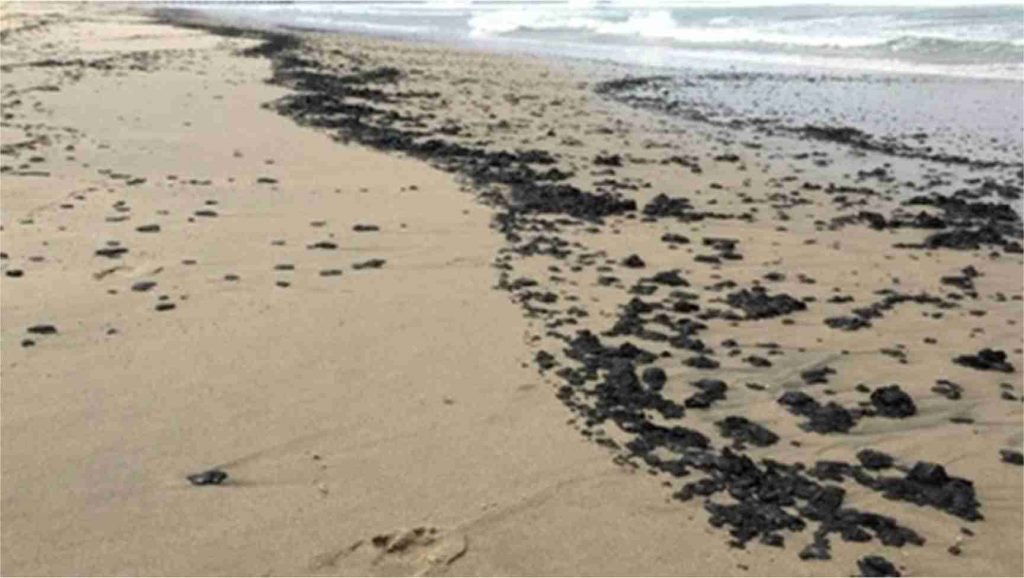Gupta Era Temple in Etah
The Indian Express
GS 1: Indian History
Context:
- Recently, the Archaeological Survey of India (ASI) discovered remains of an ancient temple dating back to the Gupta period (5th century) in a village in Uttar Pradesh’s Etah district.
- The stairs of the temple had ‘shankhalipi’ inscriptions, which were deciphered by the archaeologists as saying, ‘Sri Mahendraditya’, the title of Kumaragupta I of the Gupta dynasty.
The archaeological findings
- The Bilsarh site was declared ‘protected’ in 1928. Every year, the ASI undertakes scrubbing work at the protected sites.
- This year, the team discovered “two decorative pillars close to one another, with human figurines”.
- The inscription on the stairs possibly reads ‘Sri Mahendraditya’, which was the title of Kumaragupta I.
- As per the ASI, the stairs led to a structural temple built during the Gupta period. The discovery becomes significant since only two other structural temples from the Gupta age have been found so far — Dashavatara Temple (Deogarh) and Bhitargaon Temple (Kanpur Dehat).
- In the 5th century, Kumaragupta I ruled for 40 years over north-central India. The Guptas were the first to build structural temples, distinctly different from the ancient rock-cut temples.
What is the Shankhalipi script?
- Shankhalipi or “shell-script” is a term used by scholars to describe ornate spiral characters assumed to be Brahmi derivatives that look like conch shells or shankhas.
- They are found in inscriptions across north-central India and date to between the 4th and 8th centuries.
- A similar inscription was found on the back of a stone horse sculpture from that period that is at present in the State Museum at Lucknow.
- Both Shankhalipi and Brahmi are stylised scripts used primarily for names and signatures.
- The inscriptions consist of a small number of characters, suggesting that the shell inscriptions are names or auspicious symbols or a combination of the two.
Chronology and meaning
- The script was discovered in 1836 on a brass trident in Uttarakhand’s Barahat by English scholar James Prinsep, who was the founding editor of the Journal of the Asiatic Society of Bengal.
- A year later, he came across two more similar scripts at Nagarjuna group of caves in the Barabar Hills near Gaya.
- Prominent sites with shell inscriptions include the Mundeshwari Temple in Bihar, the Udayagiri Caves in Madhya Pradesh, Mansar in Maharashtra and some of the cave sites of Gujarat and Maharashtra.
- In fact, shell inscriptions are also reported in Indonesia’s Java and Borneo.
- Scholars have tried to decipher shell script but have not been successful.
- The first detailed study of shell inscriptions was undertaken by Professor Richard Salomon of the University of Washington.
- He said there are a sufficient number of shell characters to represent the syllables of the Sanskrit language, and tentatively assigned sounds to some of the characters.
- In recent years, historian B N Mukherjee proposed a system of decipherment based on a few key inscriptions, but his suggestions do not bear scrutiny.
- Shankhalipi is found to be engraved on temple pillars, columns and rock surfaces. No such inscriptions with dates or numbers have been reported so far even as their chronology can be determined by the objects on which they are written.

MSP for Oilseeds
The Hindu
GS 3: Economy
Context:
- The Union government recently has announced higher Minimum Support Price (MSP) for rabi crops to boost their production.
- Notably, crops such as oilseeds and pulses have witnessed a higher percentage rise in their MSP when compared to major crops such as wheat.
Is the move aimed at ending dependence on imports?
- The prices of edible oils such as palm oil, sunflower oil, mustard oil etc. have increased by well over 50% in the last one year.
- This price rise has been attributed mainly to labour shortages and crop failures in major edible oil-producing nations such as Indonesia, Malaysia, Argentina, and Ukraine.
- The government thus hopes to cut down India’s dependence on foreign oil imports by boosting domestic production, and protect Indian consumers from price shocks due to global factors.
- Now, over 60% of India’s edible oil needs are met through imports.
- To boost domestic production, the MSP for rapeseed and mustard seed has been increased by as much as 8% in contrast to a mere 2% increase in the MSP for a major crop like wheat.
- Recently, the Centre had also announced the National Edible Oil mission worth ₹11,040 crore to encourage the domestic production of palm oil.
- Palm oil is a major ingredient in the food industry and represents a significant share of India’s overall imports.
Will it offer immediate benefits?
- The greater percentage increase in the support prices for oil seeds when compared to that of other crops could increase the amount of land and other resources used to cultivate oil seeds.
- But it is unlikely to offer immediate benefits in terms of higher domestic production of oil seeds and lower edible oil prices for consumers.
- It takes at least four years for certain freshly sown oil crops such as the palm oil crop to yield increased output.
- However, if these measures can help improve oilseed supply in the long run, they can indeed benefit consumers.
- There could also be other crucial factors that might play a role in the success of the Centre’s plan. For one, the price that farmers get paid for their crops is often well below the MSP. So the actual implementation of the MSP programme will be the key.
- Further, the cost of producing oil seeds may vary significantly from that of other crops, so production will depend not just on the MSP but on the expected returns from different crops.
Is a higher MSP necessary to boost oil seed production?
- A higher support price for any crop can potentially increase its production as it offers farmers more financial incentive to cultivate it.
- The price and supply of edible oils is adversely affected by factors beyond just the lack of sufficient domestic supply.
- Import taxes are considered a major culprit behind the high edible oil prices. Oils such as soya bean oil and sunflower oil are taxed at around 30% today while their refined varieties are taxed at around 40% even after the Centre slashed import taxes last week.
- So the increase in the support price for oil seeds and the National Edible Oil Mission are seen more as efforts to encourage domestic production under the Atma Nirbhar plan to attain self-sufficiency.
- It should also be noted that there may be genuine economic reasons for edible oils to be produced predominantly in certain countries and not in others.
- If so, the mere volatility in the price of imported edible oils may not be a good enough reason to subsidise domestic production.
Tarballs
The Indian Express
GS 3: Environment and Conservation
Context:
- In this month alone, the Brihanmumbai Municipal Corporation (BMC) has removed over 20,000 kg of tarballs from Juhu and Versova beaches.
- Earlier this month, several popular beaches in Goa were covered with a black sticky carpet.
About:
- Tarballs are dark-coloured, sticky balls of oil that form when crude oil floats on the ocean surface.
- They are formed by weathering of crude oil in marine environments.
- They are transported from the open sea to the shores by sea currents and waves.
- Some of the balls are as big as a basketball while others are smaller globules.
- Tarballs stick to the cleaning machinery and are very difficult to wash off.

How are these tarballs formed?
- According to the recent study of the National Institute of Oceanography (NIO),
- Wind and waves tear the oil slick into smaller patches that are scattered over a much wider area.
- Various physical, chemical and biological processes (weathering) change the appearance of the oil.
Why are tarballs found on the beaches during the monsoon?
- It is suspected that the oil comes from the large cargo ships in the deep sea and gets pushed to the shore as tarballs during monsoon due to wind speed and direction.
- All the oil spilt in the Arabian sea eventually gets deposited on the western coast in the form of tarballs in the monsoon season when wind speed and circulation pattern favour transportation of these tarballs.
‘Shoonya’ Campaign
PIB
GS 3: Environment
Context:
- NITI Aayog, with RMI and RMI India’s support, launched Shoonya—an initiative to promote zero-pollution delivery vehicles by working with consumers and industry.
About:
- The campaign aims to accelerate adoption of electric vehicles (EVs) in the urban deliveries segment and create consumer awareness about the benefits of zero-pollution delivery.
- As part of the campaign, a corporate branding and certification programme is being launched to recognise and promote industry’s efforts towards transitioning to EVs for final-mile deliveries.
- An online tracking platform will share the campaign’s impact through data such as vehicle kilometers electrified, carbon savings, criteria pollutant savings and other benefits from clean delivery vehicles.


